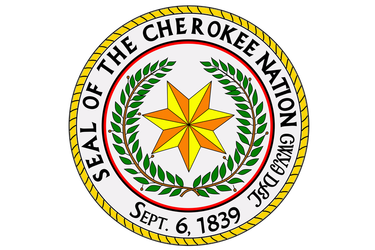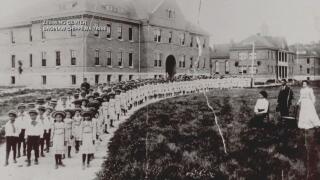Cherokee Nation Chief Reacts To Tribal Boarding School Report
News 6-Amy Slanchik - May 12, 2022 7:25 pm

The Chief of the Cherokee Nation on Thursday reacted to the federal report about abuse of tribal children in federally funded Indian boarding schools.
For 150 years, many Native American children were forced out of their homes and into those boarding schools, many of which were in Oklahoma.
Chief Chuck Hoskin Jr. said the report, released Wednesday, is long overdue, but it is appreciated.
He hopes the next steps beyond the U.S. government’s investigation, include teaching this history in school and looking for ways to heal.
The 106-page report said, “Rampant physical, sexual, and emotional abuse; disease; malnourishment; overcrowding; and lack of health care in Indian boarding schools are well-documented.”
One example points to an Oklahoma school where the report said, “single beds [WERE] pushed so closely together to preclude passage between them, and each bed [HAD] two or more occupants.”
The report said of all the schools across the United States, nearly 20 percent were in Oklahoma.
“We are in a state that is really the epicenter for the federal boarding school policy,” Chief Hoskin said.
Chief Hoskin said he first learned about the systemic abuse as a young man, when his father shared what he knew about the history.
The Chief learned even more heartbreaking details from the newly released report.
“I’m the leader of the largest tribe in the country and I will admit that this report taught me a great deal about the boarding school problem than really I knew,” he said.
The Department of the Interior said it identified more than 50 marked and unmarked graves at schools across the country.
“I think we can do some more examining of where these children may be buried. Odds are, we’re going to find them. And we ought to find them and give them the dignity, and their family the dignity that they deserve.”
Secretary of the Interior, Deb Haaland announced she will go on a year-long tour across the country to collect oral histories from survivors and their families.
You can read the full report by clicking here.




